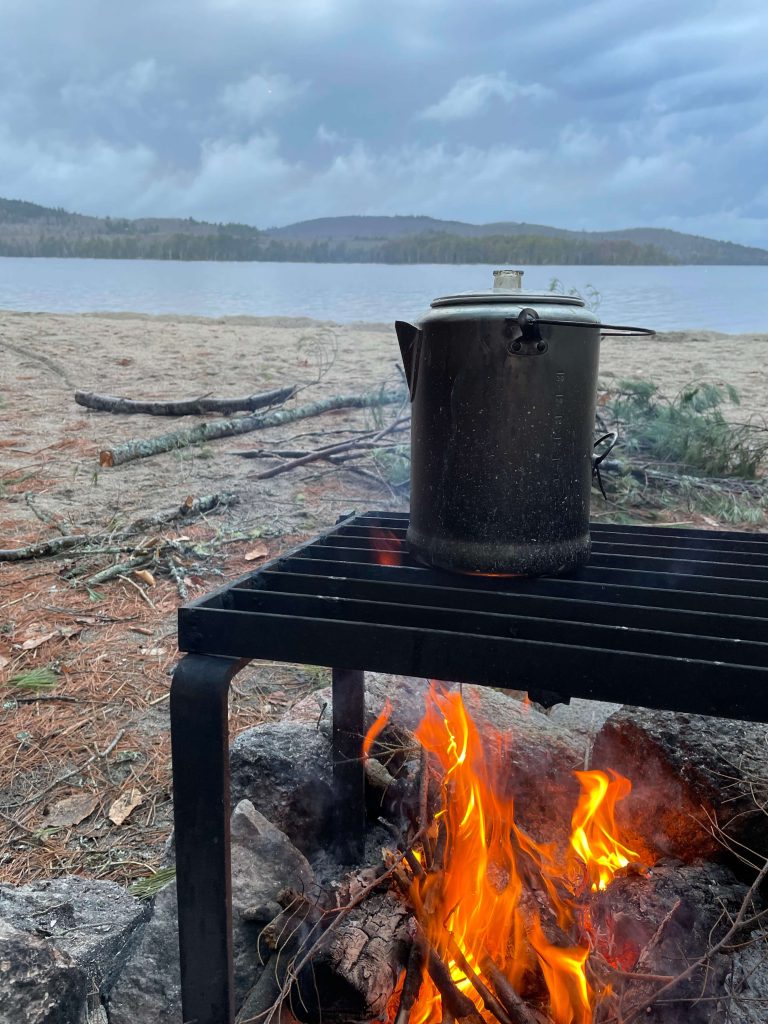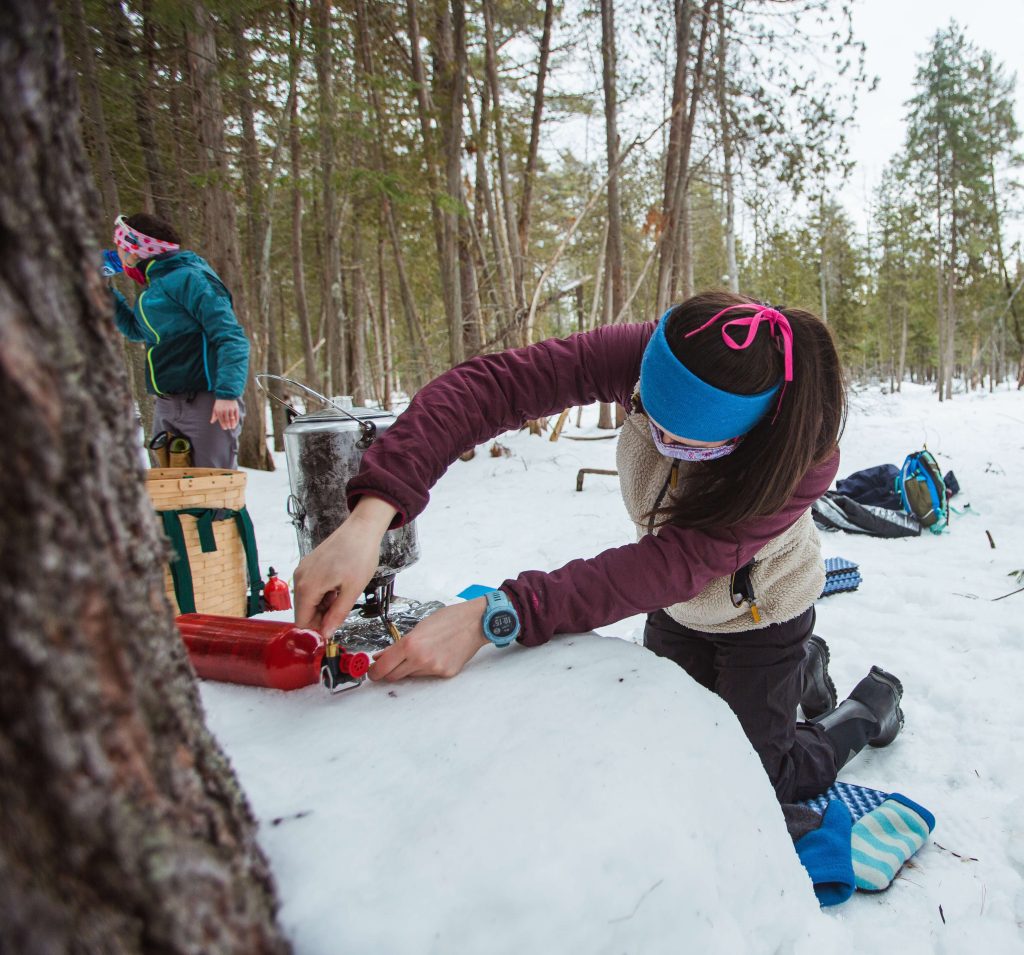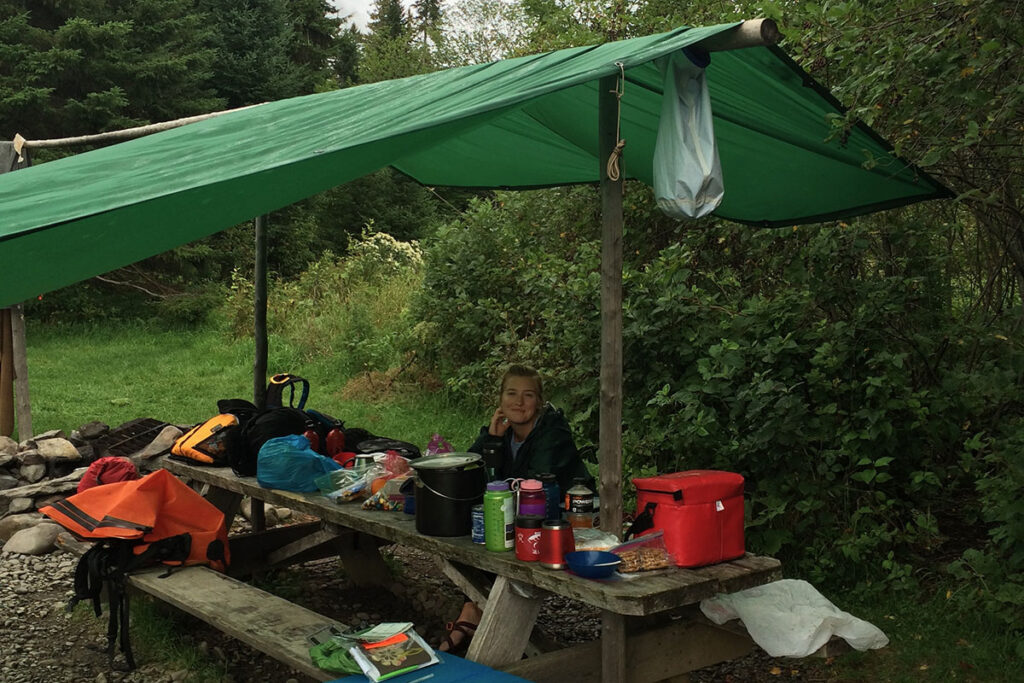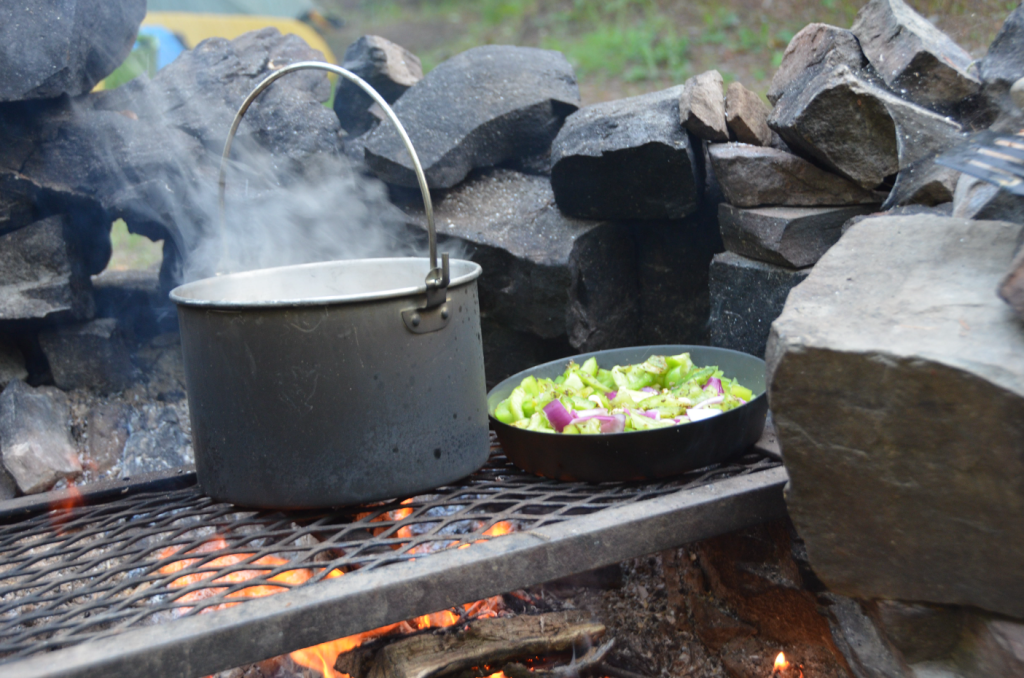Cooking Methods
Kitchen Safety
Cooking in the backcountry is one of the most dangerous parts of outdoor recreation, second to transportation in a vehicle. The camp kitchen is rather accident prone due to the complexities and risk associated with hot objects, open flames, and sharp tools. It is the role of trip leaders to manage this risk just as well as other risks that a group might encounter. A kitchen is hard to manage due to many moving parts, like the tiredness of a group, cold hands, or overall inexperience with new gear and cooking methods. There are several things that you need to be mindful of when cooking outdoors. These are: Choosing a cooking area, managing the camp kitchen, and the act of cleaning up.

Choosing a Cooking Area
When you are deciding where to set up your cooking area you should think about several things. At certain sites cooking areas are designated for open flame cooking, but at most sites you will have to choose your own location. One really big thing to think about is animals. Cooking directly next to your campsite will increase the amount of food smells and ring the dinner bell for nearby scavengers. Attracting a couple of mice to the site is more of an inconvenience than a risk, in Grizzly bear country cooking at your campsite can lead to a much greater risk of unwanted animal encounters. When choosing your site for cooking, ask yourself the following, if I woke up next morning and there was a bear going through my cooking area, would I feel at a safe distance from that animal? With that being said depending on the time of year your cook site should be anywhere from 20-100 feet away from where you are sleeping.
When you have found a spot that is a safe distance away from your group’s tents, try to find a place that is flat, and comfortable to be in. On the edge of a lake during a cold and windy day might not be as ideal as a more sheltered place more inland. Bringing a tarp to provide shelter for your cooking area is a great way to keep your camp chefs happy and ensure you are going to have good food! At some points a table or picnic bench may be the most convenient place to cook. If you choose to cook on a place like this make sure that this bench is a dedicated cooking surface. People should not sit at this table due to the hazards of potentially spilling hot food or liquids. In the winter consider constructing your own kitchen by shaping and packing snow. It is important when selecting a kitchen site that is not in a spot that is an integral walkway. Your goal is to avoid any chance of someone walking through your kitchen, have a flat spot, and have a place that is protected from the elements.

While Cooking
While cooking you need to be mindful of several things including, open flames, hot foods/liquids, cross contamination, sharps, and waste management.
Depending on the stove or open fire that you are cooking on there is a risk of people getting burnt, or fire spreading. When cooking over an open fire keep the fire as small as you possibly can, to keep overall risk low. When using a stove, think about what you are cooking on/near. This goes without saying, but you should never have an open flame inside a tent. When using a stove on the ground make sure that it is level, clear of flammable debris, and in a spot where people won’t commonly walk through an area. If cooking under a tarp, make sure the tarp is a safe distance above the stove.
One of the most severe kitchen injuries is burning through boiling water. It is essential when cooking with any hot liquid or food that you are not seated near the stove. If your stove is on a table or bench, you should not be seated there. If a pot of hot water was to spill you would want to be able to move away from the stove as quickly as possible. Standing by your stove is a much better alternative. If your stove is on the ground, kneeling is a much safer way to cook, rather than sitting.
While cooking in the backcountry it is extremely important to make sure that everyone’s hands that are touching food are extremely clean. Food borne illnesses can make a participant’s experience much worse, and can lead to larger issues like dehydration. It is important to either wash your hands, use hand sanitizer, or both! In some cooking situations thin single use gloves can also be helpful. The best way to avoid cross contamination in the backcountry is not to bring goods that can cross contaminate (like raw meat, eggs, fish). This makes overall site management easier as you may not need to bring a cooler if you bring these items. If you were going to bring these items on a trip it is important to make sure that these items are separated from pretty much every other item. Storing these items at the bottom of a cooler is ideal, if any packaging were to leak, it would contaminate other foods in the process. When cutting foods, cutting food making sure that knives are not being used for multiple food items that can not cross (meat/veg) is extremely important to prevent food borne pathogens. If you were to cook separate meals for different dietary restrictions (vegan, vegetarian, dairy free) make sure that utensils, pots, and cutting boards are separate.
Knives and other sharp kitchen utensils should always be kept with sheaves when not in use, and should be sharp before a trip. As the old saying goes, a sharp knife is a safe knife. Having sharp knives will make chopping up goods easier, and will keep the kitchen safer. Remembering to give a quick knife lesson to those helping with cooking is super helpful.
While cooking, managing waste and scraps is super important! Your goal while cooking should be to create as little waste as possible and the waste you do create should be properly disposed of. Setting up a trash bag before cooking is nice to have. Any scraps that are dropped on the ground, as small as a grain of rice should be picked up and disposed of properly. Any scraps left behind will attract animals and cause future problems.

After Cooking
After cooking up a delicious meal it is important to let any pots and pans cool down before cleaning as it is still possible to get burnt. It is also necessary to clean your kitchen to manage food scraps and clean all dishes at the campsite. There are several methods of doing this that range from the clean plates club method to the 3 bin method. Please take a look at the kitchen clean up page for more information.

